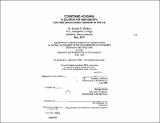| dc.contributor.advisor | Nabeel Hamdi. | en_US |
| dc.contributor.author | Morton, Everett L. (Everett Livingston) | en_US |
| dc.contributor.other | Massachusetts Institute of Technology. Dept. of Architecture. | en_US |
| dc.coverage.spatial | n-us--- | en_US |
| dc.date.accessioned | 2012-01-30T16:42:47Z | |
| dc.date.available | 2012-01-30T16:42:47Z | |
| dc.date.copyright | 1990 | en_US |
| dc.date.issued | 1990 | en_US |
| dc.identifier.uri | http://hdl.handle.net/1721.1/68726 | |
| dc.description | Thesis (M.S.)--Massachusetts Institute of Technology, Dept. of Architecture, 1990. | en_US |
| dc.description | Includes bibliographical references (leaves 39-41). | en_US |
| dc.description.abstract | This thesis examines the potential application of the L-shaped courtyard house in an American context. Privacy for the dwelling and its grounds is a key issue to be addressed. It is shown than a traditional single-family detached house will provide sufficient privacy on lots of one-quarter acre or more. However, an alternate solution must be developed in higher-density applications of one-eighth acre or less. The principal design elements desired in a traditional home are identified and incorporated into an alternate design solution. The courtyard house is proposed as an alternate and it is shown that, contrary to popular belief, such a house form can function in temperate climates without excessive heat loss. The reason for prizing an L-shaped courtyard house over other variations in a high-density application is explained in light of privacy and solar access issues. A detailed discussion of design elements in an L-shaped application include: inter-unit privacy issues, the courtyard size and passive solar heating applications, the dwelling layout and interior zoning, entry location, Circulation, facade treatment, parking, grouping or clustering, and expansion potential. It is demonstrated that the L-shaped design will satisfy American standards within a high-density urban context of eight to twelve units per acre. | en_US |
| dc.description.statementofresponsibility | by Everett L. Morton. | en_US |
| dc.format.extent | iii, 41 leaves | en_US |
| dc.language.iso | eng | en_US |
| dc.publisher | Massachusetts Institute of Technology | en_US |
| dc.rights | M.I.T. theses are protected by
copyright. They may be viewed from this source for any purpose, but
reproduction or distribution in any format is prohibited without written
permission. See provided URL for inquiries about permission. | en_US |
| dc.rights.uri | http://dspace.mit.edu/handle/1721.1/7582 | en_US |
| dc.subject | Architecture. | en_US |
| dc.title | Courtyard housing, a solution for high-density, low-rise single-family housing in the U.S. | en_US |
| dc.type | Thesis | en_US |
| dc.description.degree | M.S. | en_US |
| dc.contributor.department | Massachusetts Institute of Technology. Department of Architecture | |
| dc.identifier.oclc | 24150706 | en_US |
